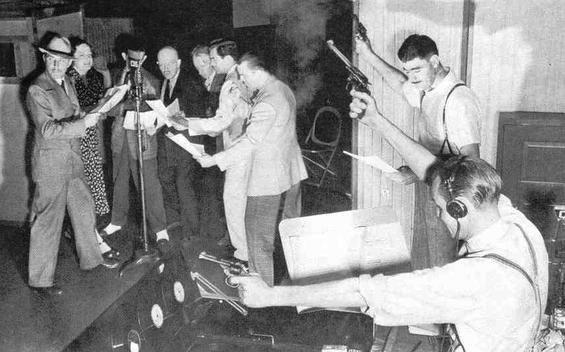PSYCHOACOUSTICS
When mixing a live service, it is very important to keep your audience in mind. What I mean by this, is that you will need to craft your mix according to age, gender, venue, and other factors. Everyone has preferences, and usually these preferences are pretty easy to guess according to what type of audience you may have. If I am mixing music for a gathering of seniors (those 65+ years of age) in a traditional setting, I am not going to be cranking four 18" subwoofers at 8000 watts. This more than likely would not be very well received. I would probably keep the volume down below 90 db, and be extra careful in making sure there were no feedback issues. So, with that said, I am going to make a simple concise list of some tips regarding what to focus on when mixing for certain types of people.
Simple List of Mixing Tips Keeping Psychoacoustics In Mind
1. Women - Studies have shown that women do not prefer bright mixes. Watch treble content.
2. Youth (Young Men) - Prefer more aggressive tones and way more focus on low end. One Word - Testosterone.
3. Older Crowd - Be easy on the volume. 85-90 decibels max. Keep bass light, and treble non-piercing.
4. Young Women - Prefer moving bass guitar lines. Melody super important.
5. Young Adult Men - Want to hear the beat. Kick and Snare with equal parts of bass guitar. Vocals riding on top. Don't let the electric guitar be lost in the mix. Always make sure a predominantly male crowd can hear the electric guitar.
6. Older Women - Be light on sharp percussive sounds. Prefers pianos over guitars. Keep acoustic instruments "warm" and not percussive. No suprises.
Universal
The hook (melody) is the star of the show. It is the frosting. No one leaves a gig humming the snare drum.
If you can make sure that everyone that these 4 main instruments are always heard:
Kick, Snare, Bass Guitar, Lead Vocals - You are halfway there to a good mix. Bring everything else up as support.
If it is a guitar based song - make sure guitar is heard more than other supporting instruments. If it's a piano based song, make sure piano is heard more than other supporting instruments.
Be easy on the 3k to 6k frequency region when mixing. The upper mid-range frequency area is the part of the spectrum in which God has tuned our hears to be the most sensitive. This is why when a baby is crying, it'll eventually drive you nuts. This happens in this frequency range.
Don't ignore or cut too much mid-range though. This is where the power of music resides. No smile curves on the main EQ please.
Too much 100hz to 200hz frequency range can cause ear fatigue quickly.
Too much 3khz to 6khz can create a feeling of nervousness.
Guitar and Bass Guitar fret buzz can cause nervousness as well. Keep those instruments well maintained!
Tuning issues. The band will lose an audience quickly if they have tuning issues. Both vocally and instrumentally speaking.


